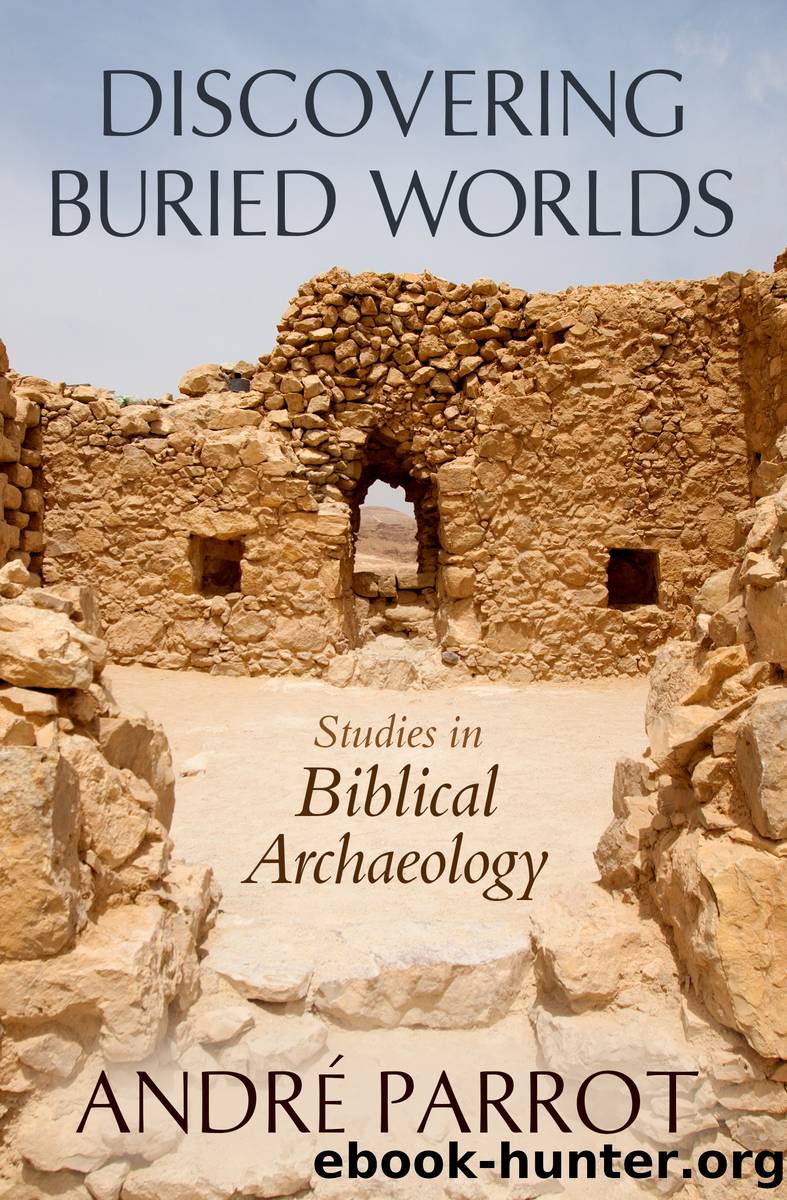Discovering Buried Worlds by André Parrot

Author:André Parrot [Parrot, André]
Language: eng
Format: epub
Publisher: Philosophical Library/Open Road Media
Published: 2022-01-15T00:00:00+00:00
All the cities except Tyre opened their gates to him. The Macedonians, holding all the ports, had thus assured their lines of communication. Intractable Tyre, besieged on its island site, was joined to the mainland by an enormous causeway, carried by assault, and like her daughter city Carthage later, was destroyed.
Alexander, having descended as far as the Nile deltaâhis pilgrimage to the Temple at Jerusalem is a pious legendâand founded Alexandria, was now in a position to settle accounts with his only adversary, Darius III. He returned to Syria, crossed first the Euphrates and then the Tigris, and crushed the Persians at Arbela. Without striking a blow he entered Babylon, Susa, Persepolis and Pasargadae. Carried away by his ambitionâgreat conquerors have never known when to stopâthe victorious Macedonian pushed on towards the east, passed through Afghanistan and into the plains of the Indus. But his troops refused to follow him any further, and the unbeaten conquerer had to retrace his steps. The return march was a terrible experience for all concerned. Having reached Babylon in June 323, Alexander fell sick. Ten days later he died. His empire was fated to be short-lived, but Hellenism had taken firm root in eastern soil. In a form that was doubtless decadent it presided over a widespread upsurge of artistic activity.
The hour had come in which the ancient metropolises renewed their youth in a flowing tide of new prosperity, a tide which reached the full under the tutelage of Rome, into whose lap the succession fell like a ripe fruit from the Seleucid tree.
The art which now blossomed out developed on a mass-production scale, for the sole benefit of wealthy merchants. It lasted for some five hundred years. Great cities grew up, not only on the sea-coast, like Sidon, or in the heart of a rich inland plain, like Baalbek, but also in the midst of the desert, like Palmyra, or even, in the case of Petra, in a wilderness of rocks. So, before passing too severe a judgment on this industralized art we ought to remember the audacity with which it strove, amid a hostile Nature, after grandeur and beauty. For this at least it is worthy of attention.
* * *
The classic example of the dominant influence of Hellenism on the Phoenician coast is furnished by the magnificent collection of sarcophagi exhumed at Sidon in 1887, now one of the finest ornaments of the Istanbul museum. The four most famous, in order of importance, are the so-called sarcophagus of Alexander, the Weeping Women, the Satrap, and the Lycian. Not everyone would find them equally pleasing, but it is certain that practically all would agree on the excellence of the first two. That of Alexander has more sparkle, one might even say exuberance, with its scenes of warfare and hunting. The other, that of the Weeping Women, is all feeling and restrained grief. There is nothing conventional about these eighteen women, these marble sentinels alternating like living pillars with the dead columns of the temple.
Download
This site does not store any files on its server. We only index and link to content provided by other sites. Please contact the content providers to delete copyright contents if any and email us, we'll remove relevant links or contents immediately.
The Daily Stoic by Holiday Ryan & Hanselman Stephen(3264)
The Fate of Rome: Climate, Disease, and the End of an Empire (The Princeton History of the Ancient World) by Kyle Harper(3030)
People of the Earth: An Introduction to World Prehistory by Dr. Brian Fagan & Nadia Durrani(2711)
Ancient Worlds by Michael Scott(2648)
Babylon's Ark by Lawrence Anthony(2648)
The Daily Stoic by Ryan Holiday & Stephen Hanselman(2523)
Foreign Devils on the Silk Road: The Search for the Lost Treasures of Central Asia by Peter Hopkirk(2442)
India's Ancient Past by R.S. Sharma(2432)
MOSES THE EGYPTIAN by Jan Assmann(2393)
The Complete Dead Sea Scrolls in English (7th Edition) (Penguin Classics) by Geza Vermes(2258)
Lost Technologies of Ancient Egypt by Christopher Dunn(2208)
The Earth Chronicles Handbook by Zecharia Sitchin(2203)
24 Hours in Ancient Rome by Philip Matyszak(2065)
Alexander the Great by Philip Freeman(2044)
Aztec by Gary Jennings(1992)
The Nine Waves of Creation by Carl Johan Calleman(1898)
Curse Tablets and Binding Spells from the Ancient World by Gager John G.;(1851)
Before Atlantis by Frank Joseph(1832)
Earthmare: The Lost Book of Wars by Cergat(1806)
